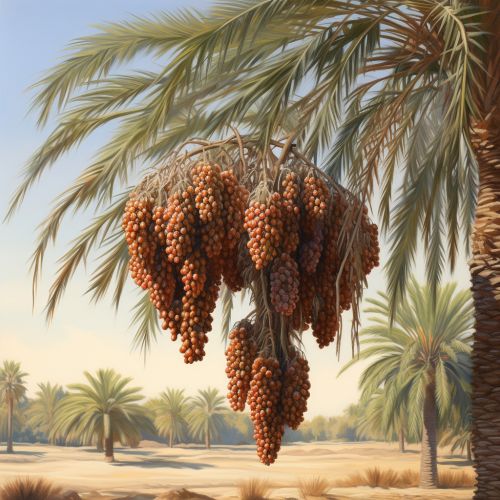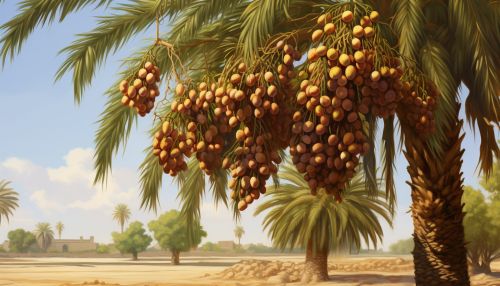Date palm
Introduction
The Date palm (Phoenix dactylifera) is a flowering plant species in the palm family (Arecaceae) that is cultivated for its sweet fruit. It is a staple food in many parts of the world and has significant economic and cultural importance in certain regions, particularly in the Middle East and North Africa.
Description
Date palms are large trees, typically reaching 15–25 meters in height. They have a single, slender, upright trunk covered with old leaf bases in a pattern that resembles a pineapple's skin. The leaves are pinnate, up to 3–5 meters long, with about 150 leaflets arranged in a V shape. The leaflets are grey-green, with the central leaflets being long and the others becoming progressively shorter towards the base of the leaf.
Distribution and Habitat
Date palms are native to the Middle East and have been cultivated there for at least 6,000 years. They are now grown in many tropical and subtropical regions worldwide, including parts of the United States, Mexico, South Africa, Australia, and the Canary Islands. They thrive in arid and semi-arid environments and are highly tolerant of drought and salinity.
Cultivation
Cultivation of date palms is a complex and labor-intensive process. The trees are dioecious, meaning they have separate male and female plants, and pollination must be done manually in commercial plantations. The fruit develops over a period of six to seven months and is typically harvested by hand.
Uses
Date palms are primarily grown for their fruit, which is consumed fresh or dried and is used in a wide variety of culinary applications. The wood of the tree is used in construction and for making furniture, while the leaves are used for weaving mats and baskets. The tree also has several medicinal uses and is used in traditional medicine in many cultures.
Cultural Significance
The date palm has a rich cultural and religious significance in many societies. It is mentioned numerous times in the Bible and the Quran, and it is a symbol of prosperity and triumph in many cultures.
See Also


